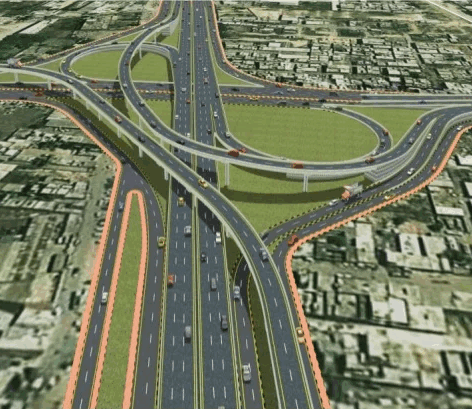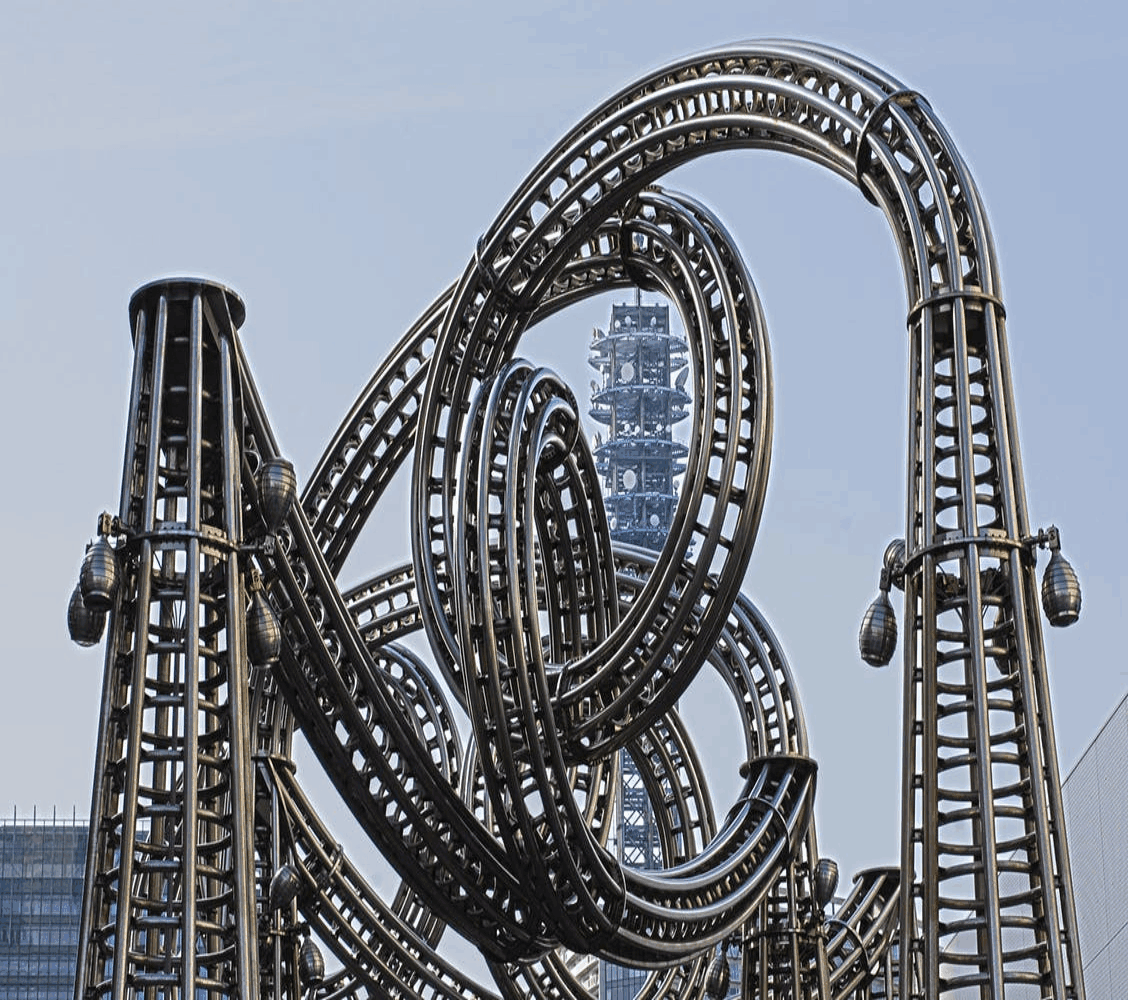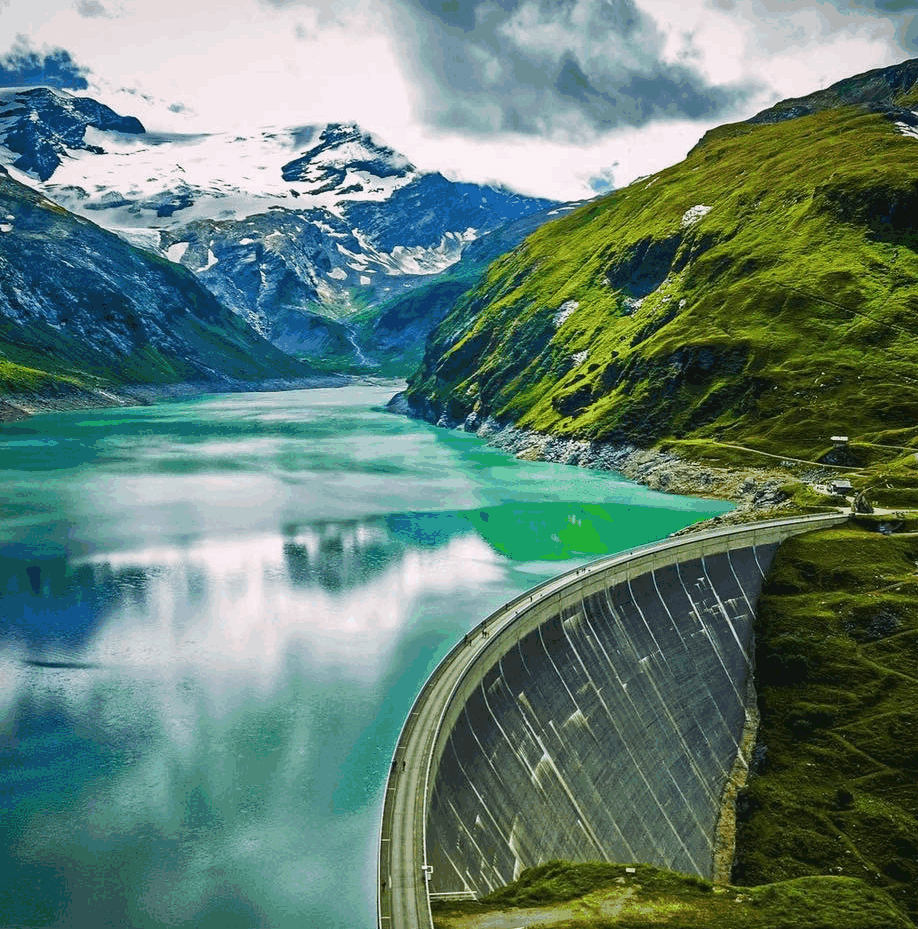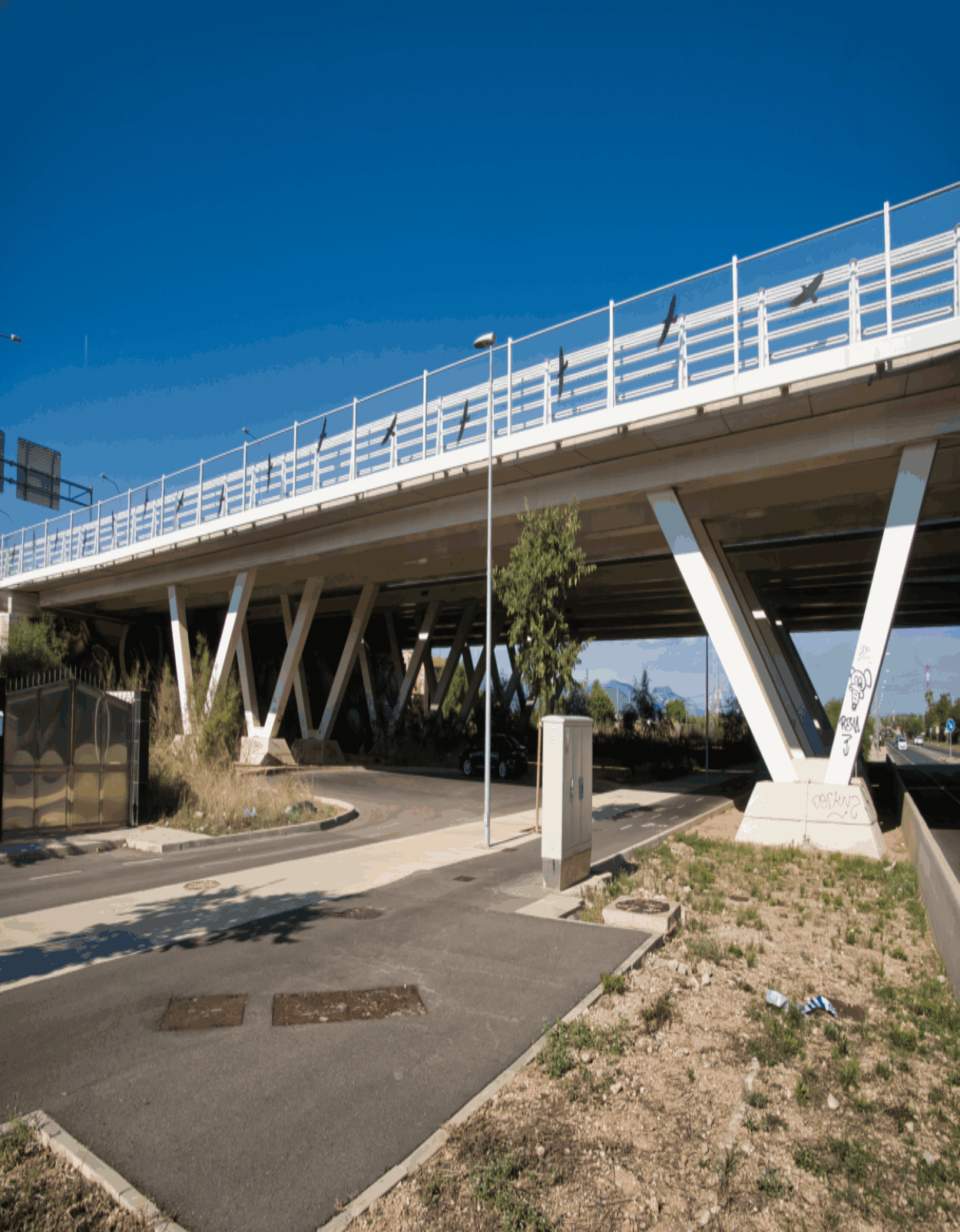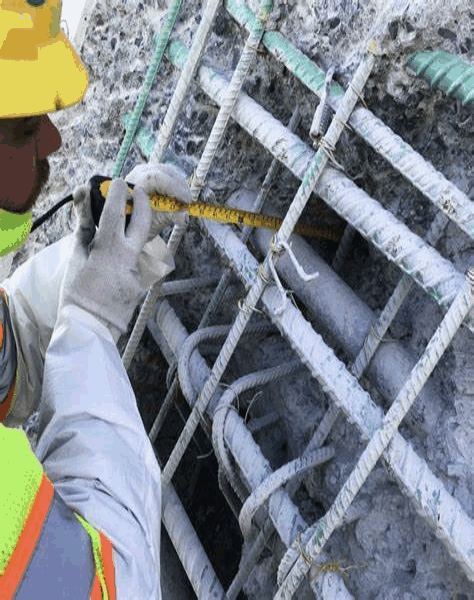services
unveiling the new horizons in engineering
Our Services
Project
Management
Infrastructure & Urban Planning
Structural Engineering
Irrigation & Hydraulic Engineering
MEP Engineering
Road and Highway Engineering
Value & Forensic Engineering
Technical Audit, Lab & Filed Testing
Project
Management
Project Initiation:
- Define project objectives, scope, and deliverables.
- Conduct Feasibility Studies (Technical, Financial, Environmental, Social etc.).
- Site assessments.
- Establish project team and roles.
Planning Phase:
- Develop a comprehensive project plan, including schedules, and resource allocation with Budgetary Planning.
- Identify risks and develop mitigation strategies.
- Obtain necessary permits and approvals.
- Define quality standards and procedures.
Design and Engineering:
- Develop detailed engineering designs and specifications of all respective fields.
- Coordinate with planners, architects, engineers, and other stakeholders.
- Ensure compliance with governing building codes and regulations.
- Incorporate sustainability, environmental and social considerations.
Procurement and Contracting:
- Development of Bill of Quantities, Technical Specifications & Bidding Documents.
- Development of Estimates of Most Probable Cost.
- Procure materials, equipment, and services.
- Solicit bids from contractors and suppliers.
- Negotiate contracts and agreements.
- Manage subcontractors and vendors.
Construction Phase:
- Supervise construction activities and progress.
- Monitor adherence to schedule, budget, and quality standards.
- Address any unforeseen issues or changes.
- Ensure site safety and compliance with regulations.
Quality Control and Assurance:
- Implement quality control measures and inspections.
- Conduct testing and evaluations.
- Address deficiencies and non-conformities promptly.
- Document all quality-related activities.
Project Monitoring and Control:
- Track project performance against baseline metrics.
- Monitor budget expenditures and resource utilization.
- Adjust plans and strategies as needed.
- Communicate progress and issues to stakeholders.
Risk Management:
- Continuously assess and manage project risks.
- Implement risk mitigation strategies.
- Monitor external factors that could impact the project.
- Maintain contingency plans.
Communication and Stakeholder Management:
- Maintain regular communication with stakeholders.
- Provide updates on project status and milestones.
- Address concerns and resolve conflicts.
- Ensure transparency and accountability.
Closeout Phase:
- Conduct final inspections and audits.
- Obtain project acceptance and sign-off.
- Complete documentation and record-keeping.
- Conduct lessons learned and post-project evaluations.
Infrastructure & Urban Planning
Urban Planning:
- Comprehensive analysis of demographics, land use, transportation, and infrastructure.
- Long-term vision development with stakeholder engagement.
- Formulation of land use plans and zoning regulations.
- Continuous review and updates to adapt to changing needs.
Transportation Planning:
- Design and management of road networks, public transit, and pedestrian/bicycle infrastructure.
- Traffic studies and modeling for optimized flow and congestion reduction.
- Promotion of alternative modes to reduce reliance on automobiles.
- Integration with land use planning for sustainable development
Infrastructure Development:
- Planning, design, and construction of water, wastewater, stormwater, and utilities.
- Infrastructure resilience for natural disasters and climate change.
- Adoption of innovative and sustainable technologies.
- Coordination with development projects for maximum benefits.
Housing and Community Development:
- Affordable housing development and mixed-income neighborhoods.
- Equitable access to housing and amenities.
- Community development initiatives and social services provision.
- Policies to prevent displacement and foster inclusive growth.
Environmental Planning:
- Protection and preservation of natural resources.
- Mitigation of environmental impacts through green infrastructure and sustainable design.
- Integration of sustainability and resilience principles.
- Promotion of environmental justice and equitable distribution of benefits.
Economic Development:
- Investments in infrastructure and workforce development.
- Support for entrepreneurship and small businesses.
- Attraction of private investment through partnerships and incentives.
- Promotion of tourism and cultural amenities.
Governance and Policy:
- Establishment of clear policies and regulations.
- Collaboration among government agencies, stakeholders, and private sector.
- Monitoring and evaluation of planning initiatives.
- Promotion of transparency and accountability.
Structural Engineering
Design and Analysis:
- Conduct structural analysis to assess loads and forces on buildings and infrastructure.
- Design structural elements like beams, columns, and foundations to withstand loads.
- Utilize computer-aided design (CAD) and structural analysis software for modeling.
Materials Selection:
- Choose appropriate materials (e.g., concrete, steel) based on structural requirements and environmental factors.
- Consider material properties such as strength, durability, and corrosion resistance.
- Incorporate sustainable materials when feasible.
Construction Oversight:
- Collaborate with architects and contractors to integrate structural design with construction plans.
- Monitor construction activities to ensure compliance with design specifications and building codes.
- Implement quality control measures to maintain structural integrity.
Retrofitting and Rehabilitation:
- Assess existing structures for deficiencies and vulnerabilities.
- Design retrofitting solutions to enhance structural strength and resilience.
- Rehabilitate aging or damaged structures to extend their lifespan.
Seismic Engineering:
- Design structures to resist earthquake forces.
- Incorporate seismic isolation and damping systems for mitigating seismic effects.
- Develop retrofitting strategies for existing structures in seismic-prone areas.
Bridge Engineering:
- Design and analyze bridge structures for various applications.
- Consider factors like traffic loads, environmental conditions, and design aesthetics.
- Conduct inspections and maintenance to ensure bridge safety and functionality.
Forensic Engineering:
- Investigate structural failures and accidents to determine causes.
- Analyze structural damage and performance deficiencies.
- Provide recommendations for remedial actions and preventive measures.
Code Compliance and Regulations:
- Stay updated on building codes, standards, and regulations.
- Ensure designs comply with legal requirements and industry standards.
- Collaborate with regulatory authorities for approvals and permits.
Type and Characteristics of Structures:
- Steel and Concrete Structures.
- Industrial facilities and Process Buildings.
- Pipe Racks.
- Table Top & Elevated Structures.
- Warehouse (with or without Shell structural system)
- Prilling Towers & Silos
- Underground Services for Plants
- Equipment Foundations.
- Pile Foundations.
- Tank Foundations.
- Compressor and Turbine Foundations (including dynamic analysis).
- Elevated and Underground Tanks.
- High Rise & Residential Buildings.
- Bill Boards & Sign Boards
- Steel structures and Transmission towers
- Rehabilitation & Structurally Strengthen of Structures
- Investigation & Structurally Strengthen of Building(s) after Natural or other hazards, like fire, earthquake, wind etc.
- Strengthen of Existing Structurally failed Building(s)
- Rehabilitation & Strengthen of Old and Historic Buildings
- Special Geometric Design
- Large Span Shells
- Domes, Skylights, Minarets, Chimneys etc.
- Steel Towers and Masts.
Irrigation & Hydraulic Engineering
Design and Planning:
- Develop irrigation systems for efficient water distribution to crops.
- Design channels, pipelines, and pumping stations to transport water.
- Plan drainage systems to manage excess water and prevent waterlogging.
Hydraulic Structures:
- Design and construct dams, reservoirs, and weirs to regulate water flow.
- Build barrages and diversion structures to control river flow.
- Construct spillways and floodgates for flood control and management.
Water Management:
- Optimize water usage through efficient irrigation techniques like drip and sprinkler systems.
- Implement water conservation measures to reduce waste and improve sustainability.
- Monitor water quality and ensure compliance with regulations.
Hydrology and Hydraulics:
- Analyze rainfall patterns and runoff to determine water availability.
- Calculate flow rates and hydraulic gradients for designing water conveyance systems.
- Model river behavior and sediment transport for erosion control.
- Hydraulic Design of Main Canal & Distribution System including Head & Cross Regulators, Super-Passage/Syphon, Falls, Multi-Level depressed Culvert, Single & Multi Span Bridge/ Culvert.
Soil-Water Interaction:
- Study soil properties and infiltration rates to assess water absorption.
- Design drainage systems to prevent soil erosion and salinization.
- Implement soil conservation practices to maintain soil fertility.
Environmental Impact Assessment:
- Evaluate the environmental impact of irrigation projects on ecosystems and biodiversity.
- Mitigate adverse effects through habitat restoration and conservation measures.
- Incorporate sustainable practices to minimize environmental degradation.
Remote Sensing and GIS:
- Use satellite imagery and geographic information systems (GIS) for mapping and monitoring water resources.
- Analyze land use and land cover changes to assess their impact on water availability.
- Utilize remote sensing data for crop monitoring and drought prediction.
Water Policy and Management:
- Develop water management policies and regulations to ensure equitable distribution and sustainable use of water resources.
- Facilitate stakeholder engagement and community participation in water governance.
- Implement water pricing mechanisms and incentives to promote water conservation and efficiency.
Research and Innovation:
- Conduct research on advanced irrigation technologies and hydraulic engineering solutions.
- Innovate new approaches for water resource management and flood control.
- Collaborate with academia, industry, and government agencies to address emerging challenges in water engineering
MEP Engineering
Mechanical Engineering:
- Design heating, ventilation, and air conditioning (HVAC) systems for buildings.
- Size and select HVAC equipment such as chillers, boilers, and air handling units.
- Design ductwork and piping layouts for efficient air and water distribution.
- Optimize energy efficiency and indoor air quality through HVAC system design.
Electrical Engineering:
- Design electrical systems for power distribution, lighting, and fire alarm systems.
- Specify electrical equipment such as transformers, switchgear, and distribution panels.
- Design lighting layouts for optimal illumination and energy efficiency.
- Ensure compliance with electrical codes and safety standards.
- Electrical (Commercial & Industrial) design
- HT/LT switchgear quality inspection.
- System maintenance planning.
- Engineering staff training for electrical design and development work.
- Cost reduction in utilities in process machines.
Plumbing Engineering:
- Design plumbing systems for water supply, drainage, and sewage disposal.
- Size and select plumbing fixtures, piping, and pumps.
- Design sanitary and storm water drainage systems to prevent backups and flooding.
- Incorporate water conservation measures such as low-flow fixtures and rainwater harvesting.
- Water Supply System (Commercial & Industrial) Design.
- Sewerage System (Commercial & Industrial) Design.
- Strom Water Design.
- Drainage System Design.
- Industrial Effulgent Design.
Fire Protection Engineering:
- Design fire suppression systems including sprinklers, standpipes, and fire pumps.
- Specify fire detection and alarm systems for early warning of fire incidents.
- Design smoke control systems to manage smoke movement in case of fire.
- Ensure compliance with fire codes and regulations for life safety.
Building Automation Systems (BAS):
- Design and integrate building automation systems for centralized control of MEP systems.
- Specify sensors, actuators, and controllers for monitoring and regulating building conditions.
- Implement energy management strategies for optimizing MEP system performance.
- Provide remote monitoring and diagnostics capabilities for proactive maintenance.
Energy Modeling and Analysis:
- Perform energy modeling to evaluate the energy performance of MEP systems.
- Analyze energy consumption and identify opportunities for energy savings.
- Recommend energy-efficient technologies and design strategies.
- Provide life cycle cost analysis to assess the economic viability of energy-saving measures.
Commissioning and Testing:
- Conduct commissioning of MEP systems to ensure proper installation and functionality.
- Perform functional testing and balancing of HVAC systems.
- Verify the performance of electrical and plumbing systems against design specifications.
- Document and report findings to ensure compliance with project requirements.
- Sustainability and Green Building:
- Incorporate sustainable design principles into MEP systems for green building certification.
- Design MEP systems for energy efficiency, water conservation, and indoor environmental quality.
- Specify renewable energy systems such as solar photovoltaic and geothermal heat pumps.
- Collaborate with architects and other design professionals to achieve sustainability goals.
Road and Highway Engineering
Roadway Design:
- Design alignment, profile, and cross-sectional elements of roads.
- Determine lane configurations, road width, and shoulder types.
- Implement standards for curvature, grade, and sight distance to ensure driver safety.
Traffic Engineering:
- Analyze traffic flow and capacity to optimize roadway efficiency.
- Design traffic control devices such as signals, signs, and markings.
- Implement intelligent transportation systems (ITS) for enhanced traffic management.
Pavement Engineering:
- Design pavement structures including asphalt, concrete, and composite systems.
- Perform soil testing and materials selection for subgrade and base layers.
- Implement pavement management systems for maintenance and rehabilitation planning.
Safety Analysis:
- Conduct road safety audits and collision analysis.
- Design roadway features to enhance safety, including barriers, lighting, and pedestrian facilities.
- Implement road safety improvement programs based on accident data.
Environmental Considerations:
- Assess environmental impacts of highway projects through environmental impact statements.
- Design drainage systems for storm-water management and erosion control.
- Implement green construction practices to minimize environmental footprint.
Construction Management:
- Oversee highway construction projects to ensure compliance with design specifications.
- Coordinate with contractors, engineers, and other stakeholders during construction.
- Monitor construction progress and manage project budgets and timelines.
Regulatory Compliance:
- Ensure highway designs comply with national and local standards and regulations.
- Obtain necessary permits and approvals from governmental agencies.
- Stay updated on changes in laws and standards affecting highway engineering.
Maintenance and Rehabilitation:
- Design maintenance strategies for extending the life of highway infrastructure.
- Evaluate existing road conditions and prioritize rehabilitation efforts.
- Implement maintenance operations such as resurfacing, sealing, and patching.
Innovative Technologies:
- Incorporate advanced materials and technologies such as high-performance concrete or recycled materials.
- Utilize geospatial and modeling technologies for design and management
VALUE & FORENSIC ENGINEERING
VALUE ENGINEERING:
Value Engineering is primarily applied during the planning stages of a project but can be implemented during any phase to improve profitability, efficiency, and effectivenessObjective Optimization:
- Aim to maximize the function of a product or project at the lowest cost.
- Focus on the value ratio of function to cost.
Function Analysis:
- Identify and analyze the functions of an item or process essential for performance.
- Prioritize these functions to enhance overall system efficiency.
Cost Reduction:
- Evaluate all aspects of a project to identify potential cost savings without compromising quality or performance.
- Implement strategies to reduce unnecessary expenditures.
Multidisciplinary Teamwork:
- Utilize a team from diverse disciplines to bring different perspectives and expertise.
- Encourage creative problem-solving and innovation through collaborative brainstorming.
Lifecycle Analysis:
- Consider the entire lifecycle cost of a project or product, from conception to disposal.
- Optimize long-term investments focusing on sustainability and operational costs.
Alternative Solutions:
- Generate multiple alternatives for achieving the desired functions.
- Compare and assess these alternatives based on cost effectiveness and reliability.
Implementation Strategies:
- Develop actionable plans to integrate the most cost-effective solutions.
- Ensure smooth execution with minimal disruption to ongoing operations.
Performance Monitoring:
- Track the performance of implemented solutions against expected outcomes.
- Use feedback to refine and optimize processes continually
FORENSIC ENGINEERING:
Forensic engineering is crucial in understanding why engineering failures occur and in preventing future incidents by providing critical insights and recommendations derived from thorough investigationsIncident Investigation:
- Investigate failures in structures, materials, products, or systems that have caused accidents or do not function as intended.
- Examine the sequence of events that led to the failure.
Root Cause Analysis:
- Determine the underlying reasons for the failure through detailed analysis.
- Utilize scientific and engineering principles to uncover the causes of failures.
Evidence Collection:
- Collect and preserve physical evidence from the site of the incident.
- Use photographs, samples, and other data gathering techniques to document findings.
Technical Assessment:
- Perform tests and simulations to analyze hypotheses about the failure.
- Use advanced tools and technologies for precise measurements and reconstruction.
Expert Testimony:
- Provide expert opinions and testimony in court cases or insurance claims related to engineering failures.
- Translate complex technical information into understandable terms for legal proceedings.
Damage Evaluation:
- Assess the extent of damage to property or equipment.
- Recommend repair, replacement, or strengthening measures based on the evaluation.
Liability and Compliance Analysis:
- Analyze design, maintenance, and operational practices against compliance with standards and regulations.
- Determine liability based on negligence or failure to meet standards.
Report Writing:
- Compile detailed and comprehensive reports outlining the investigation process, findings, and conclusions.
- Include recommendations for future prevention and improvement.
Preventive Recommendations:
- Suggest measures to prevent future occurrences of similar failures.
- Advise on improvements in design, materials, and maintenance practices based on findings.
Technical Audit, Laboratory & Filed Testing
TECHNICAL AUDIT
Technical audits serve as a systematic review process to assess the technical aspects of operations, identify areas for improvement, and ensure compliance with standards and regulationsCompliance Review:
- Assess adherence to industry standards, regulations, and internal policies.
- Verify that processes and procedures comply with legal requirements and best practices.
Documentation Examination:
- Review technical documentation, including design specifications, operational manuals, and maintenance records.
- Ensure documentation accuracy, completeness, and alignment with actual practices.
Performance Evaluation:
- Analyze the performance of equipment, systems, or processes against established benchmarks or performance indicators.
- Identify areas of inefficiency, underperformance, or non-compliance.
Risk Assessment:
- Identify potential risks related to equipment failure, safety hazards, or operational deficiencies.
- Evaluate the likelihood and impact of identified risks on business operations.
Recommendations and Improvement:
- Provide recommendations for corrective actions or improvements to address identified issues.
- Propose strategies to enhance operational efficiency, reliability, and safety.
Audit Reporting:
- Compile findings, conclusions, and recommendations into a comprehensive audit report.
- Present audit results to management or stakeholders for review and decision-making.
Follow-up and Monitoring:
- Monitor the implementation of audit recommendations and corrective actions.
- Conduct follow-up audits to assess the effectiveness of implemented measures and ensure sustained compliance.
LABORATORY TESTING
Laboratory testing plays a crucial role in product development, quality assurance, and compliance across various industries, providing essential data and insights to support decision-making and ensure product integrity.Material Analysis:
- Assess the composition, structure, and properties of materials.
- Determine material suitability for specific applications or industries.
Quality Control:
- Verify the quality and consistency of manufactured products.
- Ensure products meet specified standards and requirements.
Performance Testing:
- Evaluate the performance characteristics of products or components.
- Test durability, reliability, and functionality under controlled conditions.
Environmental Testing:
- Analyze the impact of environmental factors on materials or products.
- Test for resistance to temperature, humidity, corrosion, and other environmental stressors.
Chemical Analysis:
- Identify and quantify chemical components in materials or products.
- Assess chemical properties, purity, and compatibility.
Mechanical Testing:
- Measure mechanical properties such as strength, hardness, and elasticity.
- Conduct tension, compression, bending, or impact tests to assess mechanical performance.
Prototype Validation:
- Test prototypes to validate design concepts and performance predictions.
- Identify design flaws or areas for improvement before mass production.
Research and Development Support:
- Provide data and insights to support research and development efforts.
- Assist in product design, optimization, and innovation.
Regulatory Compliance:
- Ensure compliance with regulatory requirements and industry standards.
- Perform tests to meet certification or accreditation criteria.
FIELD TESTING
Field testing provides valuable insights into the real-world performance and usability of products, systems, and equipment, helping to validate design assumptions, identify potential issues, and optimize performance for end-users.Real-world Performance Evaluation:
- Assess how products, systems, or equipment perform under actual operating conditions.
- Measure performance metrics such as efficiency, reliability, and durability in real-world environments.
Site-specific Analysis:
- Conduct tests directly at the location where the equipment or system will be used.
- Evaluate the influence of environmental factors, such as weather, terrain, and temperature, on performance.
User Experience Feedback:
- Gather feedback from end-users on usability, functionality, and satisfaction with the product or system.
- Incorporate user insights to identify areas for improvement and enhance user experience.
Installation Verification:
- Ensure proper installation and integration of equipment or systems with existing infrastructure.
- Verify alignment with design specifications and performance requirements.
Functional Checks:
- Confirm that equipment or systems operate as intended and meet performance expectations.
- Test functionality, calibration, and safety features in real-world scenarios.
Data Collection and Analysis:
- Collect field data through measurements, observations, and recordings.
- Analyze collected data to identify trends, anomalies, or performance deviations.
Regulatory Compliance Verification:
- Ensure compliance with regulatory requirements and industry standards in field operations.
- Conduct tests to validate adherence to safety, environmental, and performance regulations.
Maintenance Assessment:
- Evaluate the need for maintenance or repairs based on field performance observations.
- Identify potential issues or maintenance requirements to prevent downtime or operational disruptions.
Documentation and Reporting:
- Document field testing procedures, observations, and findings for future reference.
- Prepare detailed reports summarizing field test results, conclusions, and recommendations.

